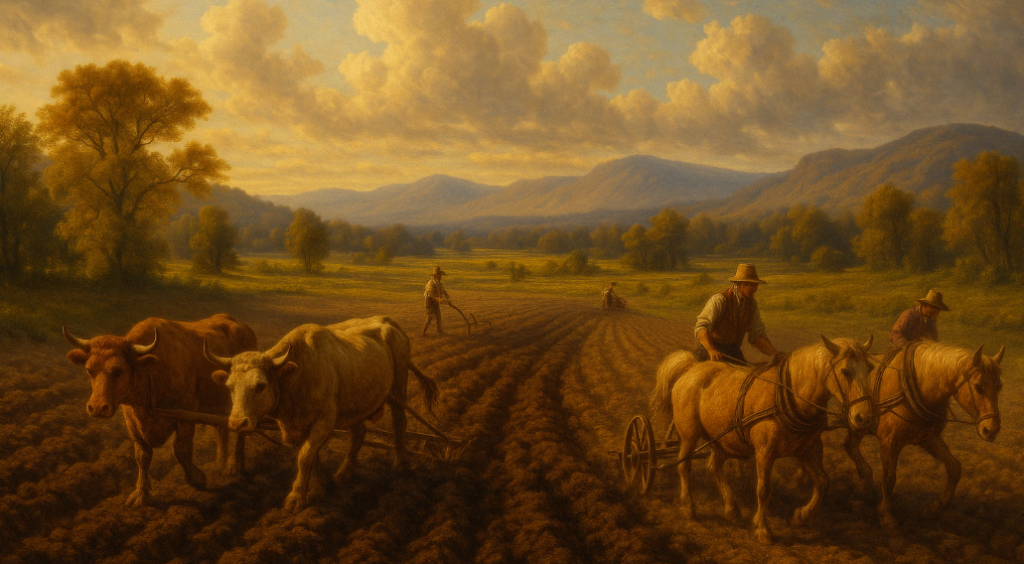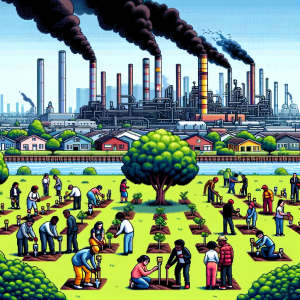
What Happens When Land Becomes More Valuable Than Labor?
Why do some societies become deeply unequal, while others stay relatively balanced? For centuries, economists, philosophers, and politicians have wrestled with this question. But new research—spanning over 1,200 archaeological sites worldwide—suggests the answers might be buried in our oldest settlements.
A recent study from the Global Dynamics of Inequality (GINI) project found a striking link between land use systems and long-term economic inequality. The takeaway? It’s not just about farming or technology—it’s about whether a society was built around land or labor.
And that distinction has shaped who gets ahead—and who gets left behind—for millennia.
Labor vs. Land: Two Paths, Two Outcomes
Imagine two ancient villages.
In the first, success depends on how many hands you have to work the fields. It’s a world where labor—especially shared or communal labor—is the key to prosperity. These are labor-limited societies. Land is plentiful, and who you know, how hard you work, and how your community organizes itself matter most.
Now picture the second village. Here, land is scarce and crucial. If you own land—or have animals like oxen to work it—you’re sitting on wealth that can be passed down for generations. These are land-limited systems. And, as the GINI researchers show, this setup tends to lead to much higher levels of wealth inequality.
It’s not just about ownership—it’s about what counts as valuable in the first place.
A Global Data Treasure Trove
To explore this, researchers examined archaeological data from over 1,200 sites, estimating inequality by measuring disparities in house sizes and storage capacity—ancient stand-ins for wealth. They then classified each site as either labor- or land-limited.
Across every major world region, the pattern was clear: land-limited economies produced more inequality. Wealth, once tied to land and material possessions, became easier to hoard—and harder to share.
Even more fascinating? This shift happened across continents and time periods, from Bronze Age Mesopotamia to medieval Zimbabwe.
And while governance and culture could moderate inequality, the economic structure—what was scarce and valuable—remained the dominant force.
Inequality Isn’t Just Bigger Houses—It’s Bigger Hierarchies
As land-limited systems took hold, something else grew too: social hierarchies.
The GINI study found that larger sites with more complex political structures—those with multiple levels of leadership and central power—tended to also show higher Gini coefficients, a statistical measure of inequality. In short, as settlements expanded and economies shifted toward land control, the rich got richer.
Conversely, in labor-limited societies, even when settlements grew, inequality often remained in check. Why? Because the source of wealth—people’s labor—was harder to pass down, monopolize, or turn into dynasties.
This isn’t just a historical curiosity—it’s a window into how societies either concentrate or distribute power.
Why This Matters Today
If it sounds familiar, that’s because it is. Today’s world still hinges on who controls resources—be it land, capital, or technology. The shift from labor to land-limited economies mirrors today’s transition from wage-based earnings to asset-based wealth: homeownership, stocks, intellectual property.
The lesson? Economic systems that tie success to heritable assets rather than shared work tend to drive inequality.
And unless governance or policy steps in to rebalance, those systems can become deeply entrenched.
Surprising Exceptions (and What We Can Learn from Them)
Not every land-limited society became a land of haves and have-nots. Cities like Teotihuacan in ancient Mexico and Mohenjo-daro in the Indus Valley were land-limited but managed relatively low inequality. What did they have in common?
Collective governance.
When decisions were made more communally and power was less concentrated, even asset-heavy societies managed to avoid runaway inequality. That’s a powerful reminder: institutions matter.
It’s not just the economy—it’s who’s steering it.
What Comes Next?
This study opens the door to even deeper questions.
- Can we learn from ancient transitions to better understand today’s widening wealth gaps?
- How can governance, culture, and policy prevent land or capital from becoming concentrated in too few hands?
- Could the growing scarcity of resources—from housing to clean water—trigger a modern version of this labor-land divide?
The archaeological record doesn’t just tell us where we’ve been—it offers a mirror for where we might be heading.
Join the Conversation
🗣️ What do you think drives inequality in your community—labor, land, or something else?
🌍 Do these ancient patterns remind you of anything in today’s world?
🏛️ How can modern institutions prevent economic power from becoming too concentrated?
Let us know in the comments—or share this article to keep the conversation going.
You’re Missing the Headlines That Matter
🚨 Critical science is unfolding—are you in the loop?
Each week, This Week in Public Health delivers need-to-know insights that shape policy, practice, and community health. If you’re not reading it, you’re already behind.👉 Subscribe for free now to stay ahead.
📢 Share this blog—someone you know needs to see it too.



